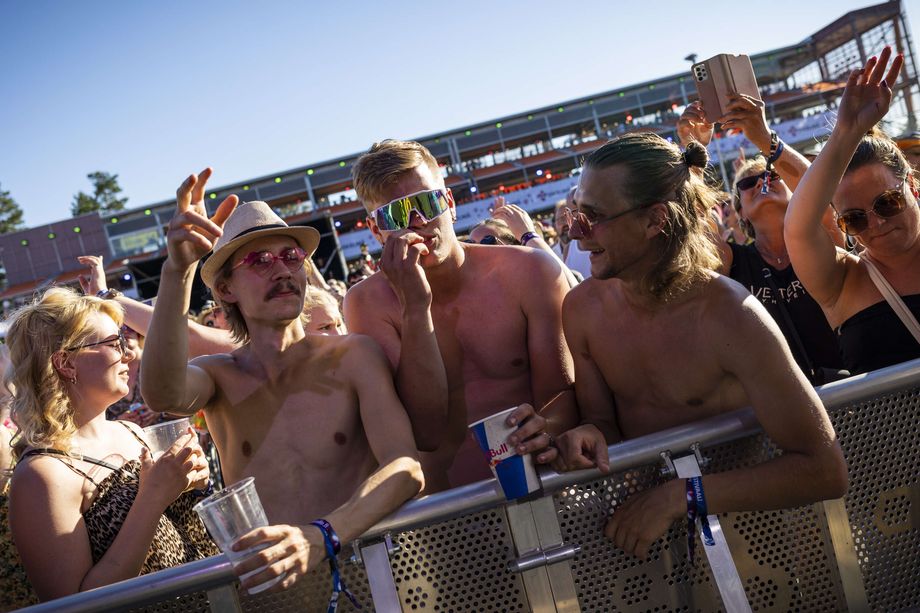Almost a quarter of Finns burn their skin once a year. In general, protection from the sun's UV rays can be unsafe in a hurry. Protection among youth is influenced by social circle and whether their parents use sunscreen.

In 2022, Iskelema Festival was hot. The study revealed that especially the youth do not protect themselves from the UV rays of the sun due to their ignorance. Illustrative image. I nodded
Finnish youth generally understand the dangers of the sun's UV radiation, but are often careless about protection. Young people don't see skin burns as a health risk, or don't take it seriously, even if they know the risk.
Master of Health Sciences Laura Mikolan Accordingly, due to age, young people do not realize that skin cancer is affecting them. She did her master's thesis on sun protection for young people at the University of Eastern Finland. The young people interviewed were aged 16-20.
– The skin always returns to normal after a burn, that's why it's not taken too seriously, Mikkola says at the press conference of the Radiation Protection Organization.
However, the skin remembers each time it is burned, and the health effects of skin's UV exposure are seen years and even decades later. Mikkola says young people's exposure to UV radiation has increased due to the popularity of tanning, travel and climate change.
– Young people belong to the UV radiation risk group, they are more sensitive to radiation and spend more time outdoors.
The need for protection begins when the UV index is above three. This code can be followed by the Finnish Meteorological Institute From the UVI Forecast Service.
Sun protection
Generally, teenagers protect themselves from the sun's UV rays by using sunscreen. If the skin does not burn easily, sunscreen is used sparingly.
– Sun protection is not necessary if the skin does not burn very easily.
Skin burn experiences also have a broader impact on young people's thinking about sun protection, Mikkola says. If the skin has been previously burned, or if a friend's skin has been badly burned, one's own skin is more closely guarded.
– There are social factors involved, i.e. if your friends protect themselves, you protect yourself. Information promotes security, but even good information does not guarantee good security.
On the other hand, lack of knowledge hinders safety, especially among young people who don't necessarily think there's anything harmful about sunlight.
– Women were aware of the disadvantages and importance of protection, but protection was still inadequate.
Young people want expert information about the benefits of sun protection, for example through schools and social media. A malicious alert is not considered the best way to approach the subject.
Up to 80 percent of skin melanomas can be prevented with proper care. It is very important to protect the skin of children and young people, which are very sensitive to burns. Frank Lehman
Effects of climate change
According to the latest climate forecasts, temperatures will rise in Finland. The warmer periods experienced in Europe will be longer and more severe in the future. This also means high levels of dangerous UV radiation in Finland.
Are children and young adults at greater risk of skin cancer now and in the future because of this?
– We think that the effect of global warming will come in particular, which means that the risk will remain the same, and the focus should be on protection now and in the future, says a researcher at the Finnish Meteorological Institute. Kaisa Lakala.
Skin remembers what it's been through, and a lifetime of exposure and burning increases the risk of skin cancer. Childhood sunburns are especially harmful, but everyone's skin needs protection from the sun.
Remember
Here's how to protect yourself from UV rays:
- It is better to avoid being in the sun during the time of strong radiation, i.e. between 10 am and 5 pm in summer. If you are outside, try to take a break from the sun, for example by seeking shade. However, shade does not protect against all UV radiation.
- Clothing protects the skin, so you should opt for long legs and shirts.
- Sunscreen protects areas of skin that cannot be covered by clothing. cream, you should choose a protection factor of at least 30. For children, use a product aimed at children with a safety factor of at least 50.
- A wide-brimmed hat protects the neck and head.
- At noon, you should seek shade or go inside.
- Sunglasses protect the eyes.
Radiation
UV radiation, also known as ultraviolet radiation, is electromagnetic radiation from the sun. It has many effects on skin cells, among others it initiates the production of vitamin D and increases the risk of skin cancer. Due to the effects of radiation, the skin darkens, thickens and ages.
Ultraviolet radiation can be divided into three categories: UVA, UVB and UVC radiation.
The most common type of radiation is long-wave UVA radiation. UVA radiation causes tanning. The radiation penetrates the skin layer and is finally absorbed into the tissues.
Significantly less UVB radiation reaches the Earth's surface. It affects the upper layers of the skin, resulting in thickening of the skin layer. When you are exposed to too much UVB radiation, the surface layer of the skin starts to burn and redden. UVC radiation on the other hand generally does not penetrate the atmosphere.